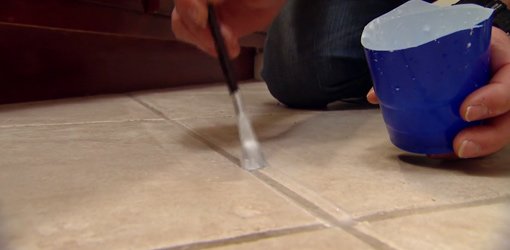Depending on the variety, bottlebrushes can grow up to 10 metres high and thrive in most areas. These are fast growers and excellent plants for screening.
Plants For Screening Fence, Garden fence screening can be seamlessly connected and trimmed and has good flexibility and can be bent Garden screening is a cheap project but the benefits are high especially if you are overlooked by various neighbours.

Euonymus is a flowering woodland plant that is also known as the wintercreeper that is generally a small tree or evergreen shrub. Once the plants have reached your desired height, snip the tops off. Modular fencing, comprised of panels or slats made from composite materials, is a stylish and contemporary garden screening idea. Euonymus is a flowering woodland plant that is also known as the wintercreeper that is generally a small tree or evergreen shrub.
Adorned with big white egg like flowers in autumn and winter.
Red tip photinias grow 6 to 12 feet in height and grow well in zones 7 through 9. There are some plants which are suitable for garden screening, spruce is one great choice. Hardy native shrub loaded with cream flowers and cinnamon scented leaves. Euonymus is a flowering woodland plant that is also known as the wintercreeper that is generally a small tree or evergreen shrub. These plants will quickly cover a fence and provide privacy. Garden fence screening can be seamlessly connected and trimmed and has good flexibility and can be bent
 Source: decoist.com
Source: decoist.com
In small gardens fences provide a valuable opportunity to grow climbers and carefully chosen shrubs. Hardy native shrub loaded with cream flowers and cinnamon scented leaves. You can harvest it after three years and made it wood. There’s nothing like the tall, stately silhouette of a cypress tree. You can start to plant many spruces in one line to be.
 Source: walmart.com
Source: walmart.com
This can be done in a variety of ways, for example as a hedge, as one or more tall trees growing above the fence (full standard trees) or climbers such as jasmine, pyracantha or ivy covering an ugly wall or fence. An attractive flowering hedge, the lilly pilly can grow up to five meters in height. Cypress also grows very.
 Source: pinterest.co.uk
Source: pinterest.co.uk
Cypress also grows very tall and narrow, meaning it can be planted close together to as a privacy screen. Growing a bamboo fence is the most general use of bamboo. It does well in both sun and shade. Growing along fences, these create a perfect living screen, and the privacy trees keep their color throughout the winter. Known for their.
 Source: decoist.com
Source: decoist.com
It goes very well in a fence and grows well either in light shade or full sun. Because this plant grows tall and narrow, it’s perfect for planting in a row to create a screen, as shown by the patio space below. Hicks yew (taxus x media ‘hicksii’) Some of them are briefly explained below: There are some plants which.
 Source: thegardenglove.com
Source: thegardenglove.com
Growing along fences, these create a perfect living screen, and the privacy trees keep their color throughout the winter. Shrubs are some of the best plants for fence line screening. Because this plant grows tall and narrow, it’s perfect for planting in a row to create a screen, as shown by the patio space below. It goes very well in.
 Source: thegardenglove.com
Source: thegardenglove.com
But old fences cry out for an attractive climber, and even stylish ones benefit from some vertical planting. A single plant can be used to mask your view of distant objects, such as a gas meter or a neighbor’s trash cans. They are about four feet wide and just as wide. You can harvest it after three years and made.
 Source: pinterest.co.uk
Source: pinterest.co.uk
This plant grows more speedily than many others. Apart from these, there are many more plants that can be used for hedging viz. Here’s our list of screen stars! Bamboo makes a great contemporary screen. It does well in both sun and shade.
 Source: decoist.com
Source: decoist.com
These plants will quickly cover a fence and provide privacy. Hardy native shrub loaded with cream flowers and cinnamon scented leaves. Bamboo makes a great contemporary screen. Some vining plants that grow fast are ivy, clematis or hops. Use screening plants as living screens to provide privacy from the neighbours, to hide fences or to divide areas into garden rooms.
 Source: revolutionarygardens.com
Source: revolutionarygardens.com
Privacy plants, or screening plants, serve as a living privacy fence to provide privacy from street traffic and neighbors. Once the plants have reached your desired height, snip the tops off. Growing along fences, these create a perfect living screen, and the privacy trees keep their color throughout the winter. Bamboos come with countless benefits. It is planted 30 cm.
 Source: decoist.com
Source: decoist.com
Hardy native shrub loaded with cream flowers and cinnamon scented leaves. It is planted 30 cm apart, and branches at the centre require pruning every year. These are fast growers and excellent plants for screening. Some vining plants that grow fast are ivy, clematis or hops. You can harvest it after three years and made it wood.
 Source: pinterest.es
Source: pinterest.es
Vines are an excellent choice to fill in gaps in the garden fence. Red tip photinias grow 6 to 12 feet in height and grow well in zones 7 through 9. They are about four feet wide and just as wide. Palms, acalypha, caesalpinia, aralia, eranthemum, lantana tecoma, cactus etc. Known for their hardiness, bottlebrushes are a popular australian native.
 Source: amsterdamgreenhouses.com
Source: amsterdamgreenhouses.com
Our most popular screening trees and shrubs for privacy include bamboo plants, photinia red robin as shrubs or trees, laurels such as prunus laurocerasus or prunus. You can harvest it after three years and made it wood. Depending on the variety, bottlebrushes can grow up to 10 metres high and thrive in most areas. Euonymus is a flowering woodland plant.
 Source: greenearth-landscapes.com
Source: greenearth-landscapes.com
That may be overkill for a privacy screen, so it’s best to stick with a smaller variety. A single plant can be used to mask your view of distant objects, such as a gas meter or a neighbor’s trash cans. Some vining plants that grow fast are ivy, clematis or hops. Growing a bamboo fence is the most general use.
 Source: thespruce.com
Source: thespruce.com
Growing a bamboo fence is the most general use of bamboo. These plants will quickly cover a fence and provide privacy. With a longer flowering season than most types of roses, climbing roses can provide your garden with a pretty screening option. Jasmine is another perfect plant for screening. Because this plant grows tall and narrow, it’s perfect for planting.
 Source: pinterest.co.uk
Source: pinterest.co.uk
Red tip photinias grow 6 to 12 feet in height and grow well in zones 7 through 9. How does bamboo aid in screening your house? If not allowed to grow to its natural width, it can appear twiggy due to its large leaf. Jasmine is another perfect plant for screening. They are about four feet wide and just as.
 Source: bamboosourcery.com
Source: bamboosourcery.com
Jasmine is another perfect plant for screening. Because this plant grows tall and narrow, it’s perfect for planting in a row to create a screen, as shown by the patio space below. Privacy plants, or screening plants, serve as a living privacy fence to provide privacy from street traffic and neighbors. Artificial plant wall can also act as a windshield.
 Source: diyselfy.blogspot.com
Source: diyselfy.blogspot.com
With a longer flowering season than most types of roses, climbing roses can provide your garden with a pretty screening option. Some of them are briefly explained below: Red tip photinias grow 6 to 12 feet in height and grow well in zones 7 through 9. Use screening plants as living screens to provide privacy from the neighbours, to hide.
 Source: bambooplantshq.com
Source: bambooplantshq.com
But old fences cry out for an attractive climber, and even stylish ones benefit from some vertical planting. Hardy native shrub loaded with cream flowers and cinnamon scented leaves. Known for their hardiness, bottlebrushes are a popular australian native that can work well as a screening plant. Bamboo can be grown in containers, making it a good choice for screening.
 Source: hortzone.com
Source: hortzone.com
In small gardens fences provide a valuable opportunity to grow climbers and carefully chosen shrubs. Modular fencing, comprised of panels or slats made from composite materials, is a stylish and contemporary garden screening idea. Use screening plants as living screens to provide privacy from the neighbours, to hide fences or to divide areas into garden rooms. Garden fence screening can.
 Source: gardenmandy.com
Source: gardenmandy.com
It does well in both sun and shade. Shrub plants for fence line. Vines tend to get out of control so you have to prune them on a regular basis. Some of them are briefly explained below: Suitable plants for screening can include hedging shrubs, trees or grasses and bamboos, depending on the level of formality, and the height and.
 Source: pinterest.com
Source: pinterest.com
It does well in both sun and shade. Do not fertilize boston ivy, or it may take over other plants located nearby. Suitable plants for screening can include hedging shrubs, trees or grasses and bamboos, depending on the level of formality, and the height and spread required for the space. They are about four feet wide and just as wide..
 Source: ncgreenprints.com
Source: ncgreenprints.com
Once the plants have reached your desired height, snip the tops off. In small gardens fences provide a valuable opportunity to grow climbers and carefully chosen shrubs. Vines are an excellent choice to fill in gaps in the garden fence. Some vining plants that grow fast are ivy, clematis or hops. Use screening plants as living screens to provide privacy.
 Source: aliexpress.com
Source: aliexpress.com
Do not fertilize boston ivy, or it may take over other plants located nearby. You can start to plant many spruces in one line to be used as fences. A single plant can be used to mask your view of distant objects, such as a gas meter or a neighbor’s trash cans. Some vining plants that grow fast are ivy,.
 Source: centenarylandscaping.com.au
Source: centenarylandscaping.com.au
These plants have shiny green leaves and grow fast in most conditions. Bamboo can be grown in containers, making it a good choice for screening a patio, roof terrace or balcony. That may be overkill for a privacy screen, so it’s best to stick with a smaller variety. Modular fencing, comprised of panels or slats made from composite materials, is.
 Source: greensideupgifts.com
Source: greensideupgifts.com
Shimpaku junipers are an excellent choice for containers. Cypress also grows very tall and narrow, meaning it can be planted close together to as a privacy screen. Growing along fences, these create a perfect living screen, and the privacy trees keep their color throughout the winter. Euonymus is a flowering woodland plant that is also known as the wintercreeper that.







